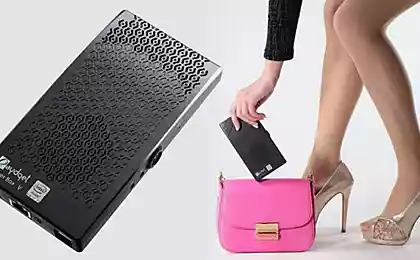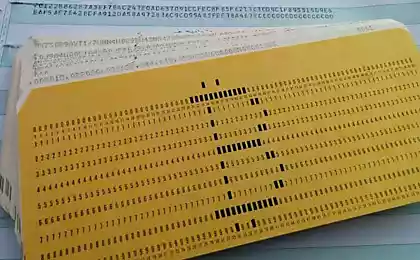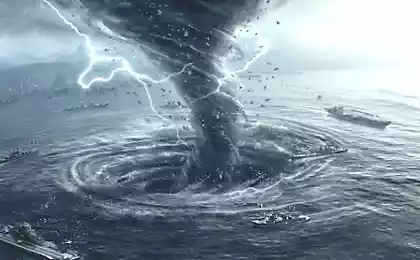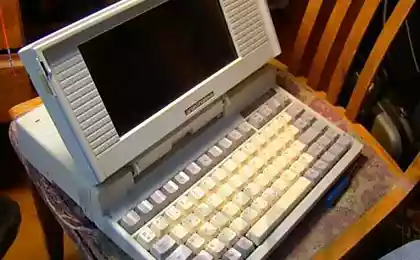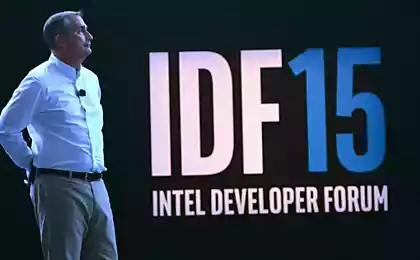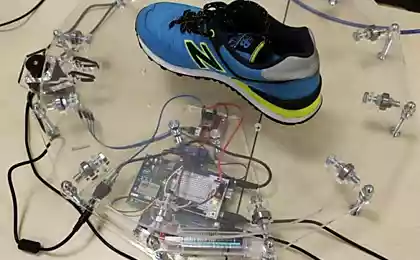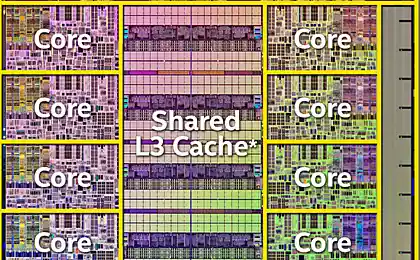632
Stanford and another innovation
The man is 80% of the liquid. Question: How many computers can make of a man? At first glance, the answer is obvious - no way. But you have not heard about another innovation from scientists at Stanford University.

Uma Stanford spent more than a decade to design and build the first working model of a computer based on the physical movement of water droplets "drop on a chip." This is a real breakthrough in the physics calculations based on the basic designation of the computer: a programmable device capable of performing logic (mathematical) operations. By combining cutting-edge theory in hydrodynamics and outdated theory in computer technology, the team created a computer Manu Prakash, computing power is entirely based on the physics of water.
Computer based on the physics of movement of liquid droplets in the working times slower than the computer, based on the movement of electrons. The truth in this case it does not matter. Nobody expected that the new CPU-based fluid is super-fast. But lead researcher Manu Prakash and his graduate students are hoping that the use of computational principles in handling the liquid will produce computer revolution in other areas of science.
Originally, the main purpose of Prakash (assistant professor in bioengineering) was to create a platform for secure super-fast chemical analysis. The method, which will be further described hereinafter, potentially allowing direct millions of liquid droplets on a contour chips, wherein each of the drops may contain various chemicals for testing. A well-designed chip reduces months of chemical experiments in test tubes up to one minute on the chip itself. Once designed and set up the chip, it drops the samples were loaded.
At the heart of the system is the principle of specular reflection of the applied magnetic field. Prakash calls his invention the "magnetic watch." This set of four hoops, creating a magnetic field around the circuit. The chip half the size of a postage stamp, built tiny metal rods that are easily magnetized. The bars form the intricate track, similar to the maze game "Pac-Man". The surface is covered with a thin layer of oil, which ensures free movement of liquid droplets. The glass chip with a maze and ready oiled piece of glass covered with a second thickness of 0.2mm.
The fluid comprises magnetic nano-particles that are sensitive to the applied magnetic field. (Experimental liquid droplets can be placed only in assembled and ready to use chip.) Only after the chip is fully assembled and ready to use it can be put drops of experimental liquid. This sequence allows precise control of the size of the 10mkm to 1mm.
By changing the polarity of the channel team of scientists can choose which will be passed through the maze. The "magnetic clock" voltage is applied sequentially to the hoop, creating a magnetic field. The voltage on one of the hoops takes a split second and is called tact. At this time, droplets do exactly one step. Above the device installed sensitive camera, is perceived as an experimental unit of the substance, and its absence - as zero. Thus it was realized the classic binary command structure.
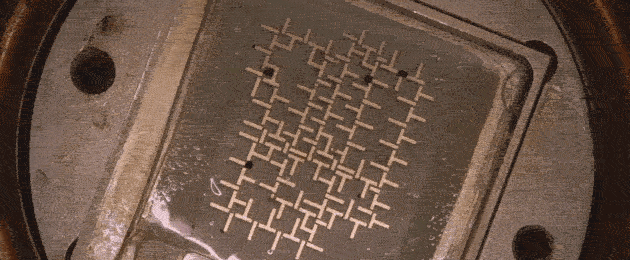
The researchers argue that they can control the millions of drops at the same time a large-scale model technology. In a classical computer bits control the clock cycle, but here they are based on the physics of fluids. Even a thousand different drops reacted in the same way, the synchronous operation to achieve computational purposes.
Some of the earliest electronic computers (computers), such as the UNIVAC I, had a memory based on mercury. That is why the idea of representation based on the computing power of the liquid matter is not new.
What is new is the use of the physical structure of the chip to make the liquid substances targeted and programmed movement. Best of scenarios of technology - a paradigm shift in the approach to experimental chemistry that will lead to an increase in computer performance.
Also - this is a big push towards a new generation of medicine "body on a chip." This achievement will allow to study the effects of drugs on the individual organs in the human body. It's quick and systematic verification of the effect of thousands of substances. (Specify what they do?) That in the future will lead to the next point, called a "man on a chip", where one computer can replace a living organism.
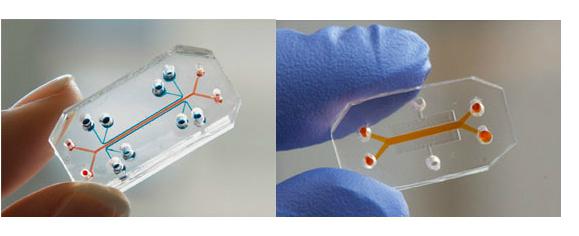
I think you have already seen the news about the "green" chip in which silicon is replaced with epoxy coating paper from pulp nenofibrila (CNF). Combinations of these ideas will bring scientists to the creation of a green computer. The lack of electrons and the presence of oil, which can be replaced with 3M Novec, will significantly reduce the cost of cooling, reducing them to near zero.
Now the technology "drop on a chip" is inferior in performance to any CPU smatrfona. Let us recall the Intel 4004 chip that was terribly slow and cumbersome by modern standards. But for 1971, the year it was a real breakthrough, which has evolved into something beautiful. And "drop on a chip" is not just another improvement. This new technology era that will affect not only the computer world, but all the applied sciences.
Source: geektimes.ru/company/ua-hosting/blog/252100/

Uma Stanford spent more than a decade to design and build the first working model of a computer based on the physical movement of water droplets "drop on a chip." This is a real breakthrough in the physics calculations based on the basic designation of the computer: a programmable device capable of performing logic (mathematical) operations. By combining cutting-edge theory in hydrodynamics and outdated theory in computer technology, the team created a computer Manu Prakash, computing power is entirely based on the physics of water.
Computer based on the physics of movement of liquid droplets in the working times slower than the computer, based on the movement of electrons. The truth in this case it does not matter. Nobody expected that the new CPU-based fluid is super-fast. But lead researcher Manu Prakash and his graduate students are hoping that the use of computational principles in handling the liquid will produce computer revolution in other areas of science.
Originally, the main purpose of Prakash (assistant professor in bioengineering) was to create a platform for secure super-fast chemical analysis. The method, which will be further described hereinafter, potentially allowing direct millions of liquid droplets on a contour chips, wherein each of the drops may contain various chemicals for testing. A well-designed chip reduces months of chemical experiments in test tubes up to one minute on the chip itself. Once designed and set up the chip, it drops the samples were loaded.
At the heart of the system is the principle of specular reflection of the applied magnetic field. Prakash calls his invention the "magnetic watch." This set of four hoops, creating a magnetic field around the circuit. The chip half the size of a postage stamp, built tiny metal rods that are easily magnetized. The bars form the intricate track, similar to the maze game "Pac-Man". The surface is covered with a thin layer of oil, which ensures free movement of liquid droplets. The glass chip with a maze and ready oiled piece of glass covered with a second thickness of 0.2mm.
The fluid comprises magnetic nano-particles that are sensitive to the applied magnetic field. (Experimental liquid droplets can be placed only in assembled and ready to use chip.) Only after the chip is fully assembled and ready to use it can be put drops of experimental liquid. This sequence allows precise control of the size of the 10mkm to 1mm.
By changing the polarity of the channel team of scientists can choose which will be passed through the maze. The "magnetic clock" voltage is applied sequentially to the hoop, creating a magnetic field. The voltage on one of the hoops takes a split second and is called tact. At this time, droplets do exactly one step. Above the device installed sensitive camera, is perceived as an experimental unit of the substance, and its absence - as zero. Thus it was realized the classic binary command structure.

The researchers argue that they can control the millions of drops at the same time a large-scale model technology. In a classical computer bits control the clock cycle, but here they are based on the physics of fluids. Even a thousand different drops reacted in the same way, the synchronous operation to achieve computational purposes.
Some of the earliest electronic computers (computers), such as the UNIVAC I, had a memory based on mercury. That is why the idea of representation based on the computing power of the liquid matter is not new.
What is new is the use of the physical structure of the chip to make the liquid substances targeted and programmed movement. Best of scenarios of technology - a paradigm shift in the approach to experimental chemistry that will lead to an increase in computer performance.
Also - this is a big push towards a new generation of medicine "body on a chip." This achievement will allow to study the effects of drugs on the individual organs in the human body. It's quick and systematic verification of the effect of thousands of substances. (Specify what they do?) That in the future will lead to the next point, called a "man on a chip", where one computer can replace a living organism.

I think you have already seen the news about the "green" chip in which silicon is replaced with epoxy coating paper from pulp nenofibrila (CNF). Combinations of these ideas will bring scientists to the creation of a green computer. The lack of electrons and the presence of oil, which can be replaced with 3M Novec, will significantly reduce the cost of cooling, reducing them to near zero.
Now the technology "drop on a chip" is inferior in performance to any CPU smatrfona. Let us recall the Intel 4004 chip that was terribly slow and cumbersome by modern standards. But for 1971, the year it was a real breakthrough, which has evolved into something beautiful. And "drop on a chip" is not just another improvement. This new technology era that will affect not only the computer world, but all the applied sciences.
Source: geektimes.ru/company/ua-hosting/blog/252100/
